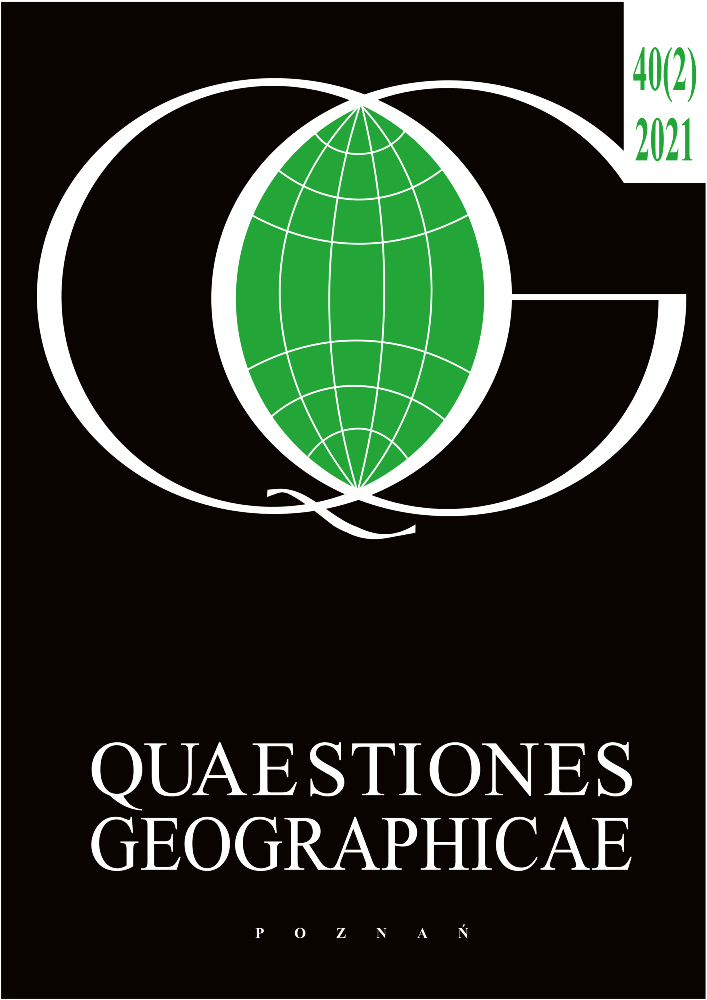Abstract
The article aims to attract the attention of geographers to the development of technology for the design of tourist routes. The world and Russian experience of designing long interregional tourist routes is considered. The au- thors’ approaches to route design are illustrated by the example of the Urals. Interregional tourist routes in Russia are actively developed with the support of the government. They are initiated by interacting regions and especially federal districts. Interregional routes are tours covering several adjacent regions or regions that are close not territorially, but thematically in tourist aspects. Such routes are quite different, but they have mainly cultural and informative goals as well as an excursion, transport and sometimes cruise style. Among all the interregional routes, the ‘Golden Ring’ and the ‘Volga-Kama’ river cruises are exemplary, among which the ‘Moskovskaya krugosvetka’ stands out due to the uniqueness of the ring shape of the route. The geographic features of the Urals are at the heart of the logical decisions for the preparation of the interregional tourist project ’The Great Ural Route’. The Urals have attractive, image, logistic and other opportunities for organising a large tourist route. A route should be developed for residents of the country and foreign guests, which will introduce the most striking and characteristic objects of the macro region as a whole. Moreover, the annular shape of the route is most preferred. It is advisable to lay the route in most of the Ural regions. It should include the main cities, landscapes of different natural zones, the most significant excursion sites and distinctive territories. Geographic route design technologies make it possible to make them relevant for a long time.
References
Antonson H., Jacobsen J.K.S., 2014. Tourism development strategy or just brown signage? Comparing road administration policies and designation procedures for official tourism routes in two Scandinavian countries. Land Use Policy 36: 342–350.
Balyuk N.A., Kuprina L.E., Siteva S.S., 2019. Formation of a digital cluster along the tourist route ‘The Great Tea Road’: Tobolsk – Omsk – Tara – Tomsk. Connect-Universum – 2018. Collection of materials of the IV International Transdisciplinary Scientific and Practical WEB Conference: 29–37.
Briedenhann J., Wickens E., 2004. Tourism routes as a tool for the economic development of rural areas – vibrant hope or impossible dream? Tourism Management 25(1): 71–79.
Fedulin A.A., Kopylov Y.V., Afanasyev O.E., 2015. Roads of the sovereign soul: A project for the development of motor transport infrastructure and roadside services in the Central Federal District/Modern problems of service and tourism 9(3): 49–60.
Guidelines for the formation of competitive tourist routes in Russia, designed for a wide audience of Russian and foreign consumers. Online: https://turizmrm.ru/10-07-06-2017.pdf (accessed: 12 December 2019).
Gomilevskaya G.A., Petrova G.A., 2017. Sea tourism as a component of the tourist brand “Eastern Ring of Russia”. Territory of new opportunities. Bulletin of the Vladivostok State University of Economics and Service 3(38): 71–85.
Hasuike T., Katagiri H., Tsubaki H., Tsuda H., 2013. Interactive multi-objective route planning for sightseeing on Time-Expanded Networks under various conditions. Procedia Computer Science 22: 221–230.
Kalyuzhnaya Y.Y., Vaganova E.V., Kovalevsky E.A., 2018. The role of the Russian Geographical Society in the development of tourism: The creation of the inter-regional route “The Golden Ring of Siberia”. Possibilities for the development of regional studies and tourism of the Siberian region and adjacent territories. Collection of materials of the 17th International Scientific and Practical Conference dedicated to the 140th anniversary of TSU and the 70th anniversary of RGO LLP: 53–55.
Kuznetsova N.F., 2017. “The Great Silk Road” as a way of integrating the objects of the cultural and historical heritage of South Siberia into the tourism industry. Azimuth of Scientific Research: Economics and Management 63(20): 219–224.
Lim K.H., 2016. Recommending and planning trip itineraries for individual travellers and groups of tourists. In: The 26th International Conference on Automated Planning and Scheduling: 115.
Lourens M., 2007. The underpinnings for successful route tourism development in South Africa (Doctoral dissertation, University of the Witwatersrand): 129.
Maksanova L.B.Zh., Zhalsaraeva B.R.D., Kaurov I.A., 2017. Tourist route “The Great Tea Road”: Problems and development prospects. Bulletin of the Buryat State University. Economics and Management 2: 40–47.
Meyer D., 2004. Tourism routes and getaways: Key issues for the development of tourism routes and gateways and their potential for pro-poor tourism. Discussion Paper. Overseas Development Institute.
Rogerson C.M., 2007. Tourism routes as vehicles for local economic development in South Africa: The example of the Magaliesberg Meander. In: Urban Forum 18(2): 49–68.
Sergachev S.A., 2012. “Green routes” of the Vitebsk region – the potential for the development of inter-regional cooperation in the field of tourism. Experience in preserving historical and cultural heritage and cross-border cooperation in the field of cultural tourism. Materials of the international scientific-practical conference. Vitebsk State University named after P.M. Masherova: 245–248.
Sirirak W., Pitakaso R., 2018. Marketplace location decision making and tourism route planning. Administrative Sciences 8(4): 72.
Zyryanov A.I., Korolev A.Y., 2009a. The logic of tourist travel and the development of reference routes. Geograficheskiy vestnik 2: 78–88.
Zyryanov A.I., Korolev A.Y., 2009b. Tourist zoning of mountainous territories. Vestnik Moskovskogo universiteta. Seriya 5, Geografiya: 19–25.
Zyryanov A.I., Zyryanova I.S., 2013. Technology of independent travel planning. Geograficheskiy vestnik 2(25): 99–103.
Zyryanov A.I., 2014. Systematization of tourist taxa. Vestnik Moskovskogo universiteta. Seriya 5, Geografiya 3: 16–22.
Zyrianov A.I., 2018. Fractional zoning and areal tourism development. Vestnik Moskovskogo universiteta. Seriya 5, Geografiya 5: 44–51.

